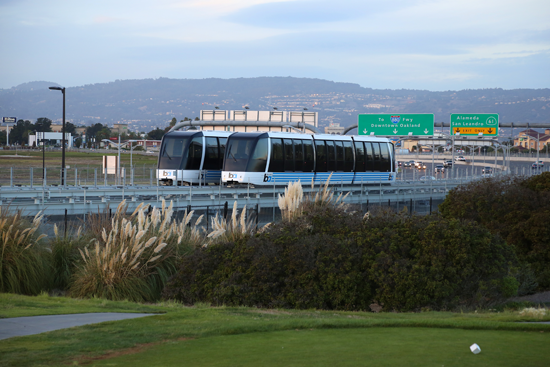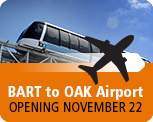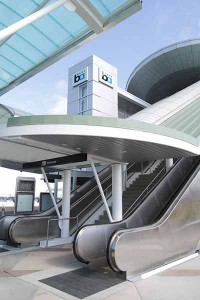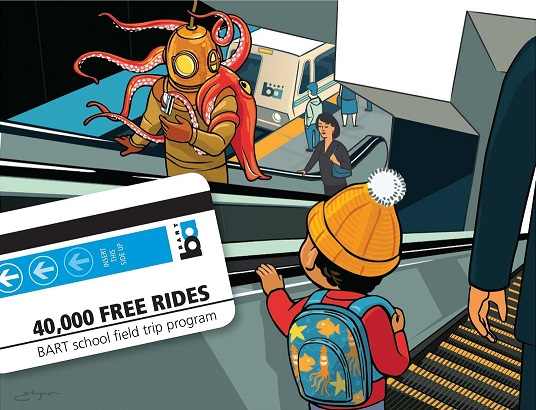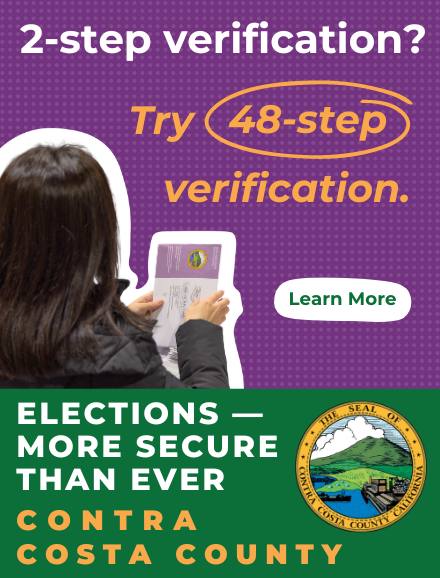Data Shed Light on Health, History of Region’s Transportation Network
OAKLAND, Calif., Jan. 28, 2015…The Metropolitan Transportation Commission (MTC) today unveiled its innovative Vital Signs website (vitalsigns.mtc.ca.gov), an interactive tool that Bay Area residents can use to track the region’s progress toward reaching key transportation, land use, environmental and economic policy goals. Residents also can consult the new website to learn more about historical trends, differences and similarities among the Bay Area’s many communities, and how the nine-county region stacks up with other major U.S. metro areas.
The first phase of the Vital Signs initiative examines 14 different indicators by which the health of the Bay Area’s transportation systems can be monitored. These include several measures of Bay Area transit agencies’ performance; a detailed look at pavement conditions on state highways, city streets and county roads; and a rank-ordered list of the 139 most congested freeway segments in the region. Phase II of the Vital Signs project, slated for completion this spring, involves land use and economic development measures. Data for Phase III, which will focus on environmental and safety questions, is due for release this summer.
“Vital Signs is a wonderfully descriptive and appropriate name for this effort,” said MTC Chair and Orinda City Councilmember Amy Rein Worth. “In the same way that temperature, pulse and blood pressure can reveal a lot about a person’s overall health, measures such as transit cost-effectiveness, freeway delay, housing construction or neighborhood poverty rates can be used to gauge our region’s overall well-being.”
Dave Vautin, MTC’s Vital Signs project manager, says the website was designed to provide both access to data and a unique online experience. “This information is not just useful to researchers but genuinely interesting to the public at large. We’ve worked hard to develop customizable charts and maps, combined with high-quality graphics, that will allow all Bay Area residents to better understand what’s happening in their county, city and neighborhood.“
Among the key findings in the first set of Vital Signs data is that Bay Area commuters are committed to their choice of transportation. Solo drivers account for two-thirds of all commuters in the region, a statistic that has remained constant for decades. Still, among the nation’s 10 largest metro areas, the Bay Area has the third-lowest number of commuters who drive to work alone, trailing only New York and Washington, D.C. The percentage of Bay Area commuters who ride transit similarly has held steady at about 10 percent since the 1980s. The most significant shift in recent decades is the increasing number of residents who choose to bike to work or to telecommute. These gains have come at the expense of carpooling, which has declined in popularity over time. San Francisco leads all Bay Area cities with 32.6 percent of residents commuting to work by transit. Other cities in which the share of residents commuting via transit tops 20 percent include Albany, Colma, El Cerrito, Berkeley and Daly City.
While the Bay Area remains one of the nation’s most transit-oriented metro areas, and overall ridership in the region has grown in recent years, it is still well short of the modern-era peak achieved in 2001. Total transit ridership dipped 3 percent from 2002 to 2012 (the latest year for which National Transit Database information was available for Phase 1 of the Vital Signs project) and per-capita ridership declined 10 percent over this time. New York, Chicago, Philadelphia and Miami all experienced notable growth in both overall and per-capita transit ridership from 2002 to 2012. The only major metro areas with greater declines in ridership than the Bay Area are Houston, Dallas-Fort Worth and Atlanta. Indeed, considering the growth of the Bay Area population, the region has for two decades become less dependent on public transit, with the average resident boarding a bus, train, ferry, light-rail vehicle or cable car 79 times in 1991, compared to just such 68 trips in 2012.
Several major Bay Area transit operators carried fewer riders on a typical weekday in 2012 than they did in 1991, with declines ranging from 7 percent for San Francisco Muni to 30 percent for SamTrans. Ridership slipped 13 percent at the Santa Clara Valley Transportation Authority (VTA) and 17 percent at AC Transit. In contrast, BART and Caltrain ridership has climbed to record highs, with Caltrain carrying over 140 percent more riders each weekday than it did in 1991 and BART’s weekday ridership rising nearly 50 percent over this period.
The complete list of transportation performance measures now available on the Vital Signs website includes:
-
Commute Mode Choice (by residential and employment location)
-
Commute Time (by residential and employment location)
-
Commute Patterns
-
Traffic Volumes at Regional Gateways
-
Time Spent in Congestion
-
Miles Traveled in Congestion
-
Travel Time Reliability
-
Transit Ridership
-
Transit System Efficiency
-
Daily Miles Traveled
-
Street Pavement Condition
-
Highway Pavement Condition
-
Bridge Condition
-
Transit Asset Condition
MTC is the transportation planning, financing and coordinating agency for the nine-county San Francisco Bay Area.
NOTE: The Vital Signs initiative is further illuminated by several short videos posted on MTC’s website at: http://mtc.ca.gov/news/press_releases/vitalsigns_launch.htm.









